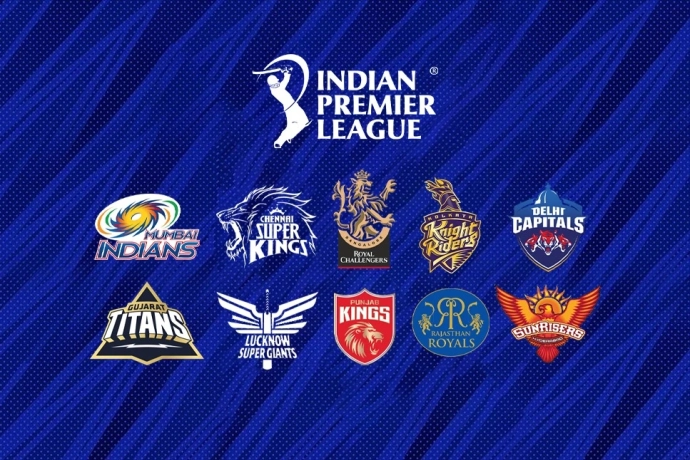Cricket is one of the oldest and most popular sports in the world. The game has a rich history, with its origins dating back hundreds of years.
A Comprehensive Guide to the History of Cricket – Origins, Inventions, and Evolution
Table of Contents
- 1 The History of Cricket: Origins, Inventions, and Evolution
- 2 Introduction
- 3 Which Country Started Cricket?
- 4 Who Invented Cricket?
- 5 When Was Cricket Established?
- 6 Technical Development
- 7 Organization of Sport and Types of Competition
- 8 When Did Cricket Become Popular?
- 9 Most Popular Countries That Play Cricket
- 10 Cricket Timeline
- 11 Cricket Facts
- 12 FAQ
The History of Cricket: Origins, Inventions, and Evolution
Introduction
Cricket is one of the oldest and most popular sports in the world. The game has a rich history, with its origins dating back hundreds of years. It has evolved over time to become an international phenomenon, played by millions of people in countries around the globe. This comprehensive guide will provide an overview of cricket’s evolution from its early beginnings to modern-day gameplay.
Which Country Started Cricket?
Cricket originated in England, with the earliest known reference to the game dating back to 1598. The sport was first played mainly by English school boys and later gained popularity among college students. By 1706, cricket had become so popular that a group of players formed a committee to set specific rules and regulations for the game.
Who Invented Cricket?
The exact inventor of cricket is unknown, however it is believed to have been invented by shepherds in the south of England who used sticks and stones as bats and stumps. The game was named ‘creckett’ after a shepherd’s term for stick or club, which became the name ‘cricket’ over time.

When Was Cricket Established?
Cricket was officially established in 1788, when the Marylebone Cricket Club (MCC) was founded. The MCC is still responsible for setting the laws of cricket and is considered the guardian of the game. In 1859, a group of English cricketers travelled to North America to promote the sport. This helped contribute to cricket’s spread throughout many countries around the world, including India, South Africa and Australia. By 1877, test matches were being held between England and these other nations.
Technical Development
Over the years, cricket has gone through various technological advancements and changes. In 1864 overarm bowling was introduced, replacing the earlier underarm style of bowling. This allowed for greater accuracy and control and evolved into the modern-day bowling techniques used today. The introduction of helmets in 1974 provided additional protection to players against injuries from fast bowlers.
Organization of Sport and Types of Competition
County and University Cricket
County and University Cricket were established in England in the late 19th century and this eventually led to the formation of The County Championship in 1890. This was a two-day competition between counties which laid the foundation for modern Twenty20 cricket tournaments.

The first ever One Day International (ODI) match took place between England and Australia at the Melbourne Cricket Ground on 7 January 1971. It marked a major change in international cricket, as it allowed games to be completed within a single day if weather conditions permitted. From 1996 onwards, some ODIs were reduced to 50 overs per side, bringing us closer to today’s 20/20 format of cricket matches.
The Cricket Council and the ECB
The International Cricket Council (ICC) is the governing body of cricket and was established in 1909. The ICC’s primary role is to promote, develop, and protect the game worldwide. They set laws for playing cricket, decide on which countries are eligible to host international matches and also establish rules for tournaments. In 1997 the England and Wales Cricket Board (ECB) was formed as a result of a merger between the English Cricket Board and the National Cricket Association. The ECB has since been responsible for running all levels of cricket in England and Wales from grassroots through to international level.
When Did Cricket Become Popular?
Cricket has become increasingly popular in recent years, largely due to the success of Twenty20 cricket. The first ever international Twenty20 match was held between Australia and New Zealand in 2005 and since then the sport has grown rapidly around the world. India’s Indian Premier League (IPL) is one of the most successful professional T20 tournaments in the world and has helped launch cricket into a new realm of popularity.

Most Popular Countries That Play Cricket
The most popular countries that play cricket are India, Pakistan, Australia, South Africa, England and Bangladesh. India is the most successful nation in international cricket with an impressive tally of three World Cup victories. Other nations such as Pakistan, Sri Lanka and Zimbabwe have also had success at different times over their cricketing history.
Impact of T20 Cricket
The introduction of T20 cricket has had a huge impact on the sport. It has allowed for more exciting matches to take place and also brought about changes to playing techniques as batsmen and bowlers have had to adapt their game in order to be successful in this format. The shorter game time has made cricket much more attractive to younger audiences, who may not have been interested in longer test or ODI formats.
Twenty20 cricket is a format of cricket that originated in England in 2003. It is a fast-paced version of the game that lasts about three hours, making it shorter than other formats like Test cricket and One Day Internationals.
In Twenty20 cricket, each team plays for 20 overs (a set of six deliveries bowled by a bowler). This means that the game is typically completed in around three hours, making it more exciting for fans who may not have the time to watch longer games. The format also encourages more aggressive and attacking play from both teams, with batsmen trying to score as many runs as possible and bowlers trying to take wickets to restrict the opposition’s scoring.
Cricket Timeline
- 16th century: Cricket is believed to have originated in southeastern England during the Tudor period.
- 18th century: The first recorded cricket match took place in 1709 between teams from Kent and London. The Hambledon Club, one of the earliest cricket clubs, was founded in 1760.
- 19th century: Cricket became more organized, with the Marylebone Cricket Club (MCC) establishing rules and regulations. The first international cricket match was played between Canada and the United States in 1844. In 1877, the first Test match took place between Australia and England in Melbourne.
- 20th century: Cricket continued to grow in popularity, with the first international cricket council, the Imperial Cricket Conference, being formed in 1909. The first ever cricket World Cup was held in England in 1975. The popularity of cricket in India grew significantly in the 1980s and 1990s.
- 21st century: The International Cricket Council (ICC) was established in 2001. The Indian Premier League (IPL), a professional Twenty20 cricket league in India, was launched in 2008. In 2019, England won their first ever Cricket World Cup title, defeating New Zealand in a thrilling final.
Cricket Facts
- The longest cricket match in history was played between England and South Africa in 1939 and lasted for 12 days.
- The first Test match was played between Australia and England in Melbourne in 1877.
- The highest individual score in Test cricket is 400 not out, scored by Brian Lara of the West Indies against England in 2004.
- The fastest century in international cricket was scored by AB de Villiers of South Africa off just 31 balls in 2015.
- The cricket ball is traditionally made of cork, covered in leather and weighs between 5.5 and 5.75 ounces.
- The fielding position known as “slip” is so named because it originally referred to the area behind the wicket-keeper where fielders would “slip” into position to catch the ball.
- Cricket has been played at the Olympic Games only once, in 1900 in Paris, when a team representing Great Britain won the gold medal.
FAQ
When was cricket invented?
Cricket is believed to have originated in England during the 16th century Tudor period. The earliest known reference to cricket dates back to 1598.
Where is cricket most popular?
Cricket is most popular in countries such as India, Pakistan, Australia, South Africa, England and Bangladesh.
When was the first Test match played?
The first Test match was played between Australia and England in Melbourne in 1877.
When was the International Women’s Cricket Council formed?
The International Women’s Cricket Council was formed in 1958.
How many players are there on a cricket team?
A cricket team typically consists of eleven players.


















